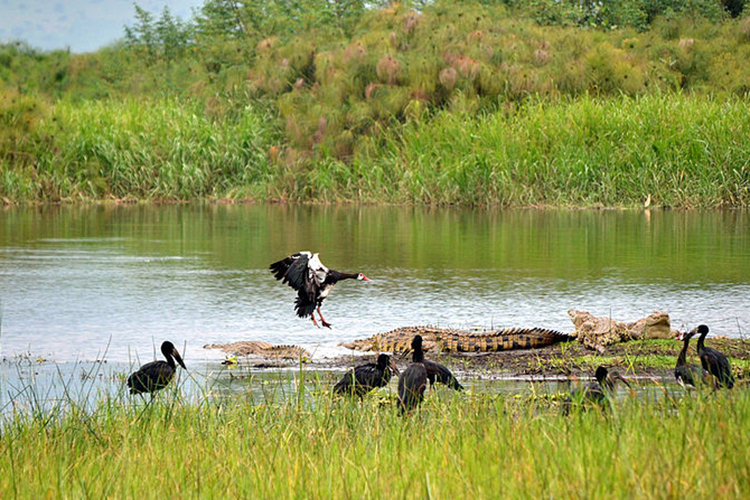Climate change puts ecosystems on the run
To keep up with global warming, the average ecosystem will need to shift about a quarter mile each year, says a new study by scientists at Stanford University and the University of California, Berkeley.

December 23, 2009
Global warming is causing climate belts to shift toward the poles and to higher elevations. To keep pace with these changes, the average ecosystem will need to shift about a quarter mile each year, says a new study by scientists at the Carnegie Institution at Stanford University and at the University of California, Berkeley.
For some habitats, such as low-lying areas, climate belts are moving even faster, putting many species in jeopardy, especially where human development has blocked migration paths.
“Expressed as velocities, climate-change projections connect directly to survival prospects for plants and animals. These are the conditions that will set the stage, whether species move or cope in place,” says study co-author Chris Field, director of the Carnegie Institution’s Department of Global Ecology. Field is also a professor of biology and of environmental Earth system science at Stanford University and a senior fellow at Stanford’s Woods Institute for the Environment.
The research team, which included researchers from Climate Central and the California Academy of Sciences, combined data on current climate and temperature gradients worldwide with climate model projections for the next century to calculate the “temperature velocity” for different regions of the world. This velocity is a measure of how fast temperature zones are moving across the landscape as the planet warms―and how fast plants and animals will need to migrate to keep up.
The researchers found that as a global average, the expected temperature velocity for the 21st century is 0.42 kilometers (0.26 miles) per year. But this figure varies widely according to topography and habitat. In areas of high topographic relief, where species can find cooler temperatures by climbing a nearby mountain, velocities are relatively low. In flatter regions, such as deserts, grasslands, and coastal areas, species will have to travel farther to stay in their comfort zone and velocities may approach 10 kilometers per year in some cases.
“Climate change is a global issue, but plants and animals will respond at a local scale,” said coauthor David Ackerly, UC Berkeley associate professor of integrative biology, who focuses on climate change impacts in the Bay Area and California. “In a mountainous area, such as the Sierra Nevada, movements uphill of just a few kilometers over the coming century may be enough to offset rising temperatures. Conservation efforts that target these rugged landscapes may be a good investment to protect our native biodiversity.”
Can the planet’s ecosystems keep up? Plants and animals that can tolerate a wide range of temperatures may not need to move. But for the others, survival becomes a race. After the glaciers of the last Ice Age retreated, forests may have spread northward as quickly as a kilometer a year. But current ecosystems are unlikely to match that feat, the researchers say. Nearly a third of the habitats in the study have velocities higher than even the most optimistic plant migration estimates. Even more problematic is the extensive fragmentation of natural habitats by human development, which will leave many species with “nowhere to go,” regardless of their migration rates.
Protected areas such as nature reserves are generally too small to accommodate the expected habitat shifts. According to the study, less than 10% of protected areas globally will maintain current climate conditions within their boundaries 100 years from now. This will present a challenge for many species adapted to highly specific conditions, especially if migration to new habitats is blocked.
Scott Loarie, a postdoctoral fellow at the Carnegie Institution and lead author of the paper, points out that an appreciation of climate velocities could stimulate discussions about sound management for climate change, from the design of nature reserves to the planning of assisted migrations for affected species. He adds that it should also stimulate discussion about strategies for minimizing the amount of warming and thereby help slow climate velocity.
The paper is published in the 24 December, 2009, Nature. The research was funded by the Gordon and Betty Moore Foundation and the Stanford University Global Climate and Energy Project.